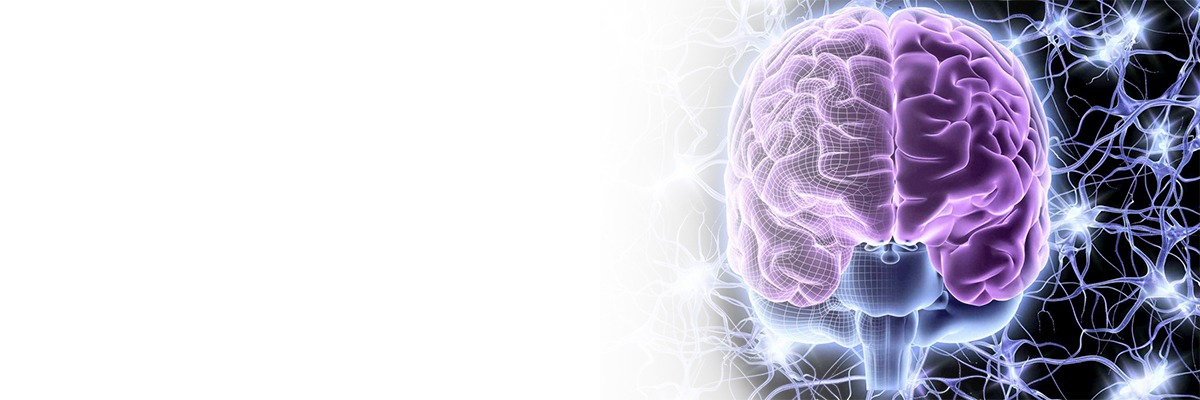
 Mr. Swapnil Bhowmick
Mr. Swapnil Bhowmick
Brain and Nervous System
A Basic Introduction to the Human Nervous System
The nervous system is divided into two sections: the central nervous system (CNS) and the peripheral nervous system (PNS). The central system, which includes the brain and spinal cord, is the major command center for the body. The peripheral nervous system is a network of nerves that connects the remainder of the body to the central nervous system.Most of the time, the brain is the final destination for information acquired by the rest of the nervous system. When a stimulus comes, the brain organizes and registers it before sending out any orders that are required.
Cerebrum & Brain Stem
The cerebrum and brain stem are two of the numerous components that make up the brain. These sections handle a portion of the brain's total job, such as memory storage and retrieval and smooth bodily movement.
Spinal Cord
Although the brain serves as the control center, its function would be impossible without the spinal cord, which serves as the primary channel for information passing between the brain and the body.
What is Vertigo?
Vertigo is a type of dizziness that gives the impression that you or your surroundings are spinning or moving.It may feel like motion sickness or lightheadedness, but it is not the same.
Types of Vertigo
Vertigo is classified into two types: peripheral vertigo and central vertigo.
Peripheral Vertigo
The most common kind of vertigo is peripheral vertigo. It is caused by a dysfunction in the inner ear, mainly in the vestibular nerve, which governs balance.
Central Vertigo
Central vertigo is caused by a disorder in the brain. It can be caused by a number of circumstances, including:
multiple sclerosis
stroke
brain tumor
migraine
traumatic brain injury
Causes of Vertigo
The following are some of the most common causes of vertigo:
Symptoms of Vertigo
Dizziness is one of the most prevalent symptoms of vertigo, and it generally increases with head movement. Patients usually describe it as a spinning feeling, with the room or items around them appearing to move.
Other vertigo symptoms include:
increased sweating
nausea
vomiting
headache
a ringing or buzzing sensation in your ears
loss of hearing
uncontrollable eye motions (nystagmus)
loss of equilibrium
Treatment of Vertigo
Treatment for vertigo might vary depending on the underlying reason. Vestibular rehabilitation treatment and drugs such as meclizine (Antivert) have been shown to be useful in alleviating symptoms.
Repositioning Maneuvers
The Epley procedure, also known as the canalith repositioning maneuver, is used to treat BPPV. These precise head movements can aid in the removal of canalith crystals (small particles that can induce vertigo) from the inner ear canals. Each therapy session consists of holding four positions for 30 to 60 seconds each and repeating each position as necessary.During the session, a healthcare practitioner can walk you through each exercise. They may also give extra instructions on how to carry out this treatment at home.
Autism
What is Autism?
Autism spectrum disorder (ASD), sometimes known as autism, is a wide term that refers to a set of neurodevelopmental disorders.Differences in communication and social interaction define these circumstances. People with ASD may exhibit restricted and repetitive interests or behavioral patterns.ASD affects people all throughout the world, regardless of race & ethnicity, culture, or socioeconomic status.
ASD is diagnosed more frequently in males than in girls, according to the Centers for Disease Control and Prevention (CDC). In 2016, a survey of 8-year-olds in 11 different places throughout the United States discovered a boy-to-girl ratio of 4.3-to-1. One in every 54 research participants had ASD.There are signs that autism is becoming more prevalent. This growth has been attributed to environmental causes by some. Experts disagree on whether there is an increase in instances or just more frequent diagnosis.
Signs & Symptoms of Autism
ASD symptoms often emerge between the ages of 12 and 24 months in early infancy. However, symptoms might emerge sooner or later.Early signs may include a significant delay in language or social development.
The DSM-5 splits ASD symptoms into two categories:
Communication and social interaction difficulties
Restricted or repetitive patterns of behavior or activity
A person must exhibit symptoms in each of these areas in order to be diagnosed with autism.
ASD can cause a variety of communication problems, many of which occur before the age of five.
Here's a rough timeline of what this may look like:
From infancy: problem with keeping eye contact.
By 9 months: stop responding to their name; not showing facial expressions that represent feelings (like surprise or anger).
By 12 months: not participating in fundamental interactive games such as peek-a-boo or pat-a-cake; not employing (or only using a few) hand motions, such as hand-waving.
By 15 months: stop communicating their interests with others (by showing someone a favorite toy, for example).
By 18 months: no longer pointing or seeing where others point
By 24 months: stop noticing when others seem unhappy or upset.
By 30 months: stop engaging in "pretend play," such as caring for a baby doll or playing with miniatures.
By 60 months: no longer participating in turn-taking games such as duck-duck-goose.
Furthermore, autistic children may have difficulty expressing their thoughts or comprehending those of others as early as 36 months. They may have trouble communicating or have very limited speaking abilities as they age.Other autistic children's language abilities may develop at a different rate. If they are really interested in a certain issue, they may create a very strong vocabulary for discussing that particular topic. However, they may have trouble talking about other topics. When autistic children first start talking, they may use an odd tone that ranges from high-pitched and "sing-songy" to robotic or flat. They may also exhibit evidence of hyperlexia, which is defined as reading beyond their chronological age. Children on the autism spectrum may learn to read at a younger age than their neurotypical classmates, often as early as age two. However, they frequently do not understand what they are reading.While autism does not usually accompany hyperlexia, research indicates that roughly 84 percent of children with hyperlexia are on the spectrum.
Restricted or Repeated Patterns of Behavior or Activities
Autism symptoms include symptoms relating to body movements and behaviors, in addition to the communication and social challenges discussed above.
These are some examples:
Rocking, flapping their arms, spinning, or running back and forth, and lining up objects, such as toys, in strict order and becoming upset when that order is disturbed.
Commitment to tight routines, such as sleep or going to school, repeating words or phrases they hear someone say over and again.
Becoming irritated by slight adjustments.
Concentrating attentively on pieces of items, such as a toy truck's wheel or a doll's hair.
Unusual reactions to sensory input, such as noises, scents, and tastes.
Obsessive hobbies.
Outstanding qualities, such as musical ability or memory capacity.
Stimming
"Stimming" refers to self-stimulating habits that frequently involve repeated gestures or utterances.Someone may, for example, clap their hands, massage an object, or repeat a sentence. Although it is commonly linked with autistic persons, almost everyone engages in some type of stimming, whether it be rubbing their hands together or chewing their nails.
Stimming can occasionally interfere with everyday living or cause bodily injury in autistic persons. However, it may also be used as a coping method for dealing with sensory overload or negotiating difficult situations, among other things.
Factors contributing to Autism
ASD's actual etiology is uncertain. The most recent study shows that there is no one reason.
Among the suspected risk factors for ASD are:
Having an autistic direct family member
Specific genetic variants
Fragile X syndrome and associated genetic conditions
Being the child of elderly parents
Metabolic abnormalities caused by low birth weight
Heavy metal and environmental contaminant exposure
History of viral infections in the mother
Exposure of the fetus to the drugs valproate or thalidomide (Thalomid)
Diagnostic Tests used to identify Autism
An ASD diagnosis entails:
Several screenings
Assessments of genetic tests
Screenings for developmental issues
Screening
The American Academy of Pediatrics (AAP) advises that all children be screened for ASD at the ages of 18 and 24 months.Screening can aid in the early detection of ASD in youngsters. They may benefit from early detection and treatment. Many pediatric clinics employ the Modified Checklist for Autism in Toddlers (M-CHAT) as a screening tool. The 23-question survey is completed by parents. Pediatricians can then utilize the replies to identify children who are at a higher risk of having ASD.It is critical to understand that screening is not a diagnosis. Children who test positive for ASD do not always have it. Furthermore, screenings do not always detect every autistic child.
Other Examinations & Tests
Your child's doctor may recommend a set of autism tests, including:
Behavioral evaluation using DNA testing for hereditary illnesses
Visual and audio exams to rule out any vision and hearing difficulties that aren't connected to ASD
Occupational therapy
Screening developmental questionnaires, such as the Autism Spectrum Disorders Questionnaire (Second Edition) of the Diagnostic Observation Schedule (ADOS-2)
Diagnosis of Autism
Typically, the diagnosis is made by a team of doctors. This group might include:
Psychologists for children
Occupational therapists
Speech and language pathologists
Bell’s Palsy
Bell's palsy is a disorder that causes momentary muscular weakness or paralysis in the face. When the nerve that controls your facial muscles gets inflamed, swollen, or compressed, it might cause this condition.One side of your face droops or stiffens as a result of the disorder. On the afflicted side, you may have trouble smiling or shutting your eyes. Bell's palsy is generally only transitory, with symptoms disappearing within a few weeks or months. Although Bell's palsy can develop at any age, it is most frequent in adults between the ages of 16 and 60. The syndrome is named after the Scottish anatomist Charles Bell, who was the first to identify it.
Causes of Bell's Palsy
Bell's palsy occurs when the seventh cranial nerve (facial nerve) swells or compresses, causing facial weakness or paralysis. The actual source of this nerve injury is uncertain. However, many medical specialists assume it’s caused by a viral infection.
The following conditions caused by viruses and bacteria have been connected to the development of Bell's palsy:
Cold sores and genital herpes, caused by herpes simplex.
Sarcoidosis, which causes organ inflammation, caused by HIV, which weakens the immune system.
Chickenpox and shingles, caused by the herpes zoster virus.
Mononucleosis, caused by the Epstein-Barr virus.
Lyme disease, a bacterial illness transmitted by infected ticks.
Many specialists believe that something might reactivate a latent viral infection, basically waking it up and causing Bell's palsy. If you're worried or have just been ill, these might be potential causes. A recent physical trauma, or even sleep deprivation, might also play a role. An autoimmune disorder might potentially be a trigger.
You are more likely to acquire Bell's palsy if you:
are pregnant
diabetic
have a lung infection
having a family history of the disease
Symptoms of Bell’s Palsy
The symptoms of Bell’s palsy can vary in severity, from mild weakness to total paralysis. The more inflammation and compression the facial nerve is exposed to, the more severe the paralysis tends to be, and the longer it takes for the nerve to heal and regain function.
The symptoms of Bell’s palsy can develop 1 to 2 weeks after you have a:
cold
ear infection
eye infection
The symptoms usually appear abruptly, and you may notice them when you wake up in the morning or when you try to eat or drink.Bell’s palsy is marked by a droopy appearance on one side of the face and the inability to open or close your eye on the affected side. In rare cases, Bell’s palsy may affect both sides of your face.
Other signs and symptoms of Bell’s palsy include:
a drooping mouth
an inability to create facial emotions, such as smiling or frowning difficulties
pronouncing certain phrases
dry eyes
a change in taste
drooling
sensitivity to sound
difficulty in eating and drinking
muscle twitches in the face
eye irritation on the involved side
headache
If you have any of these symptoms, contact your doctor right away. It is never a good idea to self-diagnose Bell's palsy. The symptoms may resemble those of more dangerous illnesses, such as a stroke or a brain tumor.
Identification & Diagnosis Bell's Palsy
Your doctor will first have you take a physical examination to establish the amount of facial muscle weakness. They'll also ask you about your symptoms, such as when they started and when you first noticed them.While there is no single lab test that your doctor can use to confirm that you have Bell's palsy, your doctor can utilize a range of tests to aid in the diagnosis of Bell's palsy.These tests can also help rule out other potential causes of facial paralysis, such as Guillain-Barré syndrome or Lyme disease.

Mr. Swapnil Bhowmick
A motivated student of Medicine & Surgery (MBBS) at R. G. Kar Medical College & Hospital, Kolkata, having a knack for reading and composing medical literature. When he's not writing content for MEDtalks, Swapnil is usually looking up the latest trends and innovations in Medicine.


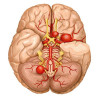

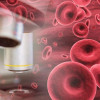
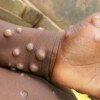
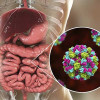
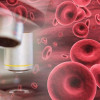


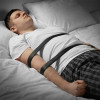
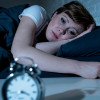
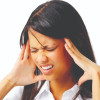
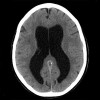
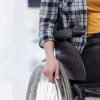
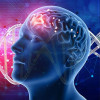
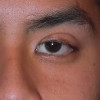



Please login to comment on this article